Bedlasky
International Hazard
    
Posts: 1219
Registered: 15-4-2019
Location: Period 5, group 6
Member Is Offline
Mood: Volatile
|
|
Chemical Christmas decorations
Hi.
I wish you happy Christmas and I have for you small Christmas experiment  . It's
very easy make this, but sometimes it takes little patience. I don't know exact amount of chemicals, but this isn't important. . It's
very easy make this, but sometimes it takes little patience. I don't know exact amount of chemicals, but this isn't important.
I made four colorchanging chemical Christmas decorations today from my stock solutions of K2CrO4, CoCl2 and CuSO4.
1. Make cca 30ml of 2,5% solution of CuSO4.5H2O, add small amount of H2SO4 (just to prevent hydrolysis) and heat it on hot water bath. Then add solid
NaCl in to the solution until it turns green. After that cool it in cold water bath to room temperature. It change colour in to turquoise. If solution
have still green colour, add dropwise some water.
2. Make cca 30ml of 2,5% solution of CuSO4.5H2O, add small amount of H2SO4 (just to prevent hydrolysis) and heat it on hot water bath. Then add solid
KBr in to the solution until it turns brown. After that cool it in cold water bath to room temperature. It change colour in to green. If solution have
still brown colour, add dropwise some water.
3. Make cca 20ml of 1,5% solution of CoCl2.6H2O, add cca 10-15ml of concentrated HCl and heat it. Then add solid NaCl in to the solution until it
turns blue. After that cool it in cold water bath to room temperature. It change colour in to red with purple hue. If solution have purple colour, add
dropwise some water.
4. Make cca 30ml of 1,5% solution of K2CrO4, add 1-3 drops of 5% NH3 solution and some solid NH4NO3 or (NH4)2SO4. Solution have yellow colour, but it
isn't typical chromate yellow. Heat in on hot water bath. Solution change colour in to orange. If not, add dropwise some 5% acetic acid. Upon
acidification you must cool solution in to room temperature. Cold solution must have yellow colour, if not, add again dropwise NH3, heat it and check
again colour of hot solution. I made my K2CrO4 solution from K2Cr2O7 and KOH, so there was very small excess of KOH, so for me it was little laborious
find good balance. NH3/NH4+ works as buffer.
These four solutions change their colour with temperature. Colorchange works for eternity, so you may repeat it when you want. It's beautiful
Christmas decoration  . .
Thanks to woelen for inspiration to make chromate/dichromate decoration  . .
Explanation:
1. [Cu(H2O)6]2+ + 3Cl- <--> [Cu(H2O)Cl3]- + 5H2O
[Cu(H2O)Cl3]- + Cl- <--> [CuCl4]2- + H2O
2. [Cu(H2O)6]2+ + 3Br- <--> [Cu(H2O)Br3]- + 5H2O
[Cu(H2O)Br3]- + Br- <--> [CuBr4]2- + H2O
3. [Co(H2O)6]2+ + 4Cl- <--> [CoCl4]2- + 6H2O
4. 2CrO42- + H2O <--> Cr2O72- + 2OH-
With increasing temperature equilibrium shifts more to the right.
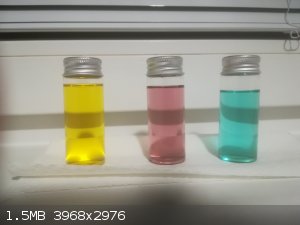 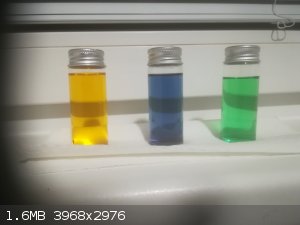 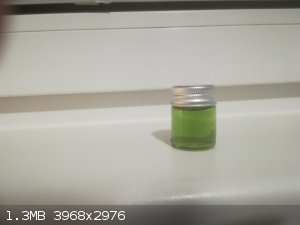 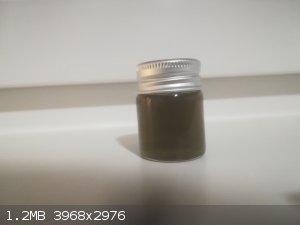
[Edited on 24-12-2019 by Bedlasky]
|
|
|
Bedlasky
International Hazard
    
Posts: 1219
Registered: 15-4-2019
Location: Period 5, group 6
Member Is Offline
Mood: Volatile
|
|
At the Christmas I remembered my experiment from previous year, so I did some writeup and post it on my website.
https://colourchem.wordpress.com/2021/01/05/chemicke-vanocni...
https://colourchem.wordpress.com/2021/01/05/chemical-christm...
|
|
|
artemov
Hazard to Others
  
Posts: 181
Registered: 22-8-2018
Member Is Offline
|
|
My rainbow salts series.
Purple: it looks more purple in real life, tetraamminecopper(II) sulfate, from basic copper carbonate
Blue: copper(II) sulfate, from basic copper carbonate
Orange: potassium dichromate, from chromium metal
Yellow: under preparation, potassium chromate, from chromium metal
Green: under preparation, nickel(II) chloride, from pure nickel coins
Red: no idea lol
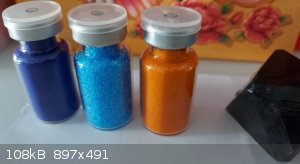
|
|
|
Bedlasky
International Hazard
    
Posts: 1219
Registered: 15-4-2019
Location: Period 5, group 6
Member Is Offline
Mood: Volatile
|
|
Red: cobalt salts are red in colour. Or nickel bis(dimethylglyoximate).
|
|
|
artemov
Hazard to Others
  
Posts: 181
Registered: 22-8-2018
Member Is Offline
|
|
I did considered dmg, but I'll have to make it from scratch, and nitrites are impossible to get here.
Another possibility are the red violurates, inspired by the violuric acid thread. But I'll have to make it from malonic acid.
I'll look into cobalt salts ... thanks.
Edit: It seems cobalt nitrate and cobalt acetate are quite red, subject to color accuracy of digital pics ... anyone seen them in real life?
[Edited on 6-1-2021 by artemov]
|
|
|
DraconicAcid
International Hazard
    
Posts: 4278
Registered: 1-2-2013
Location: The tiniest college campus ever....
Member Is Offline
Mood: Semi-victorious.
|
|
Mn(III) is a nice cherry-red, but its compounds tend not to be very stable.
Please remember: "Filtrate" is not a verb.
Write up your lab reports the way your instructor wants them, not the way your ex-instructor wants them.
|
|
|
Bedlasky
International Hazard
    
Posts: 1219
Registered: 15-4-2019
Location: Period 5, group 6
Member Is Offline
Mood: Volatile
|
|
Artemov: I saw chloride and sulfate, both have very nice red colour, but I never saw acetate and nitrate.
Draconic acid: Not all are red. Alum is violet, chlorosalts are green, oxide brown.
I myself prepare some Mn(III) aqua complexes in solution and they are violet.
|
|
|
artemov
Hazard to Others
  
Posts: 181
Registered: 22-8-2018
Member Is Offline
|
|
Yay thanks!
|
|
|
sciece nerd
Harmless

Posts: 25
Registered: 27-8-2019
Member Is Offline
|
|
CoCl2 is more of a reddish purple, and CoSo4 is more red but it's closer to light red in powder form (between pink and red) but larger crystals is
darker, more red.
|
|
|
artemov
Hazard to Others
  
Posts: 181
Registered: 22-8-2018
Member Is Offline
|
|
Quote: Originally posted by sciece nerd  | | CoCl2 is more of a reddish purple, and CoSo4 is more red but it's closer to light red in powder form (between pink and red) but larger crystals is
darker, more red. |
It's really quite hard to find true bright red salts ...
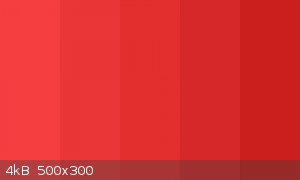
|
|
|
Diachrynic
Hazard to Others
  
Posts: 219
Registered: 23-9-2017
Location: western spiral arm of the galaxy
Member Is Offline
Mood: zenosyne
|
|
What about Reinecke's salt?
Possibly one of the nices reds I have ever had.
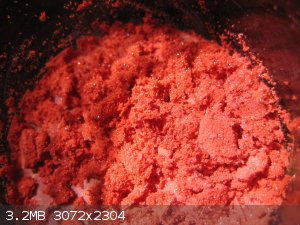
we apologize for the inconvenience
|
|
|
artemov
Hazard to Others
  
Posts: 181
Registered: 22-8-2018
Member Is Offline
|
|
"It was first reported in 1863.[3] NH4[Cr(NCS)4(NH3)2] is prepared by treatment of molten NH4SCN (melting point around 145–150 °C) with
(NH4)2Cr2O7"
Wouldn't heating ammonium dichromate be a bit dangerous?
I will need to get hands on some ammonium thiocyanate though ...
Edit: I just read up on the preparation, seems a bit too dangerous for my "lab" ...
[Edited on 6-1-2021 by artemov]
|
|
|
valeg96
Hazard to Others
  
Posts: 253
Registered: 6-4-2014
Location: Italy
Member Is Offline
Mood: Moodless
|
|
Another true red is aquopentammineCo(III) chloride, but it doesn't last too long, and quickly turns into the purple chloropentammine. It's a light
red, on the left in your scale. Other red compounds are silver chromate (a bit on the brownish side) and HgI.
|
|
|
Bedlasky
International Hazard
    
Posts: 1219
Registered: 15-4-2019
Location: Period 5, group 6
Member Is Offline
Mood: Volatile
|
|
[MoOCl(H2O)4]+ is red, but I never tried to isolate it as a solid.
|
|
|
TriiodideFrog
Hazard to Others
  
Posts: 108
Registered: 27-9-2020
Member Is Offline
|
|
Nilered has a good video
https://www.youtube.com/watch?v=BOkIqxwc5zs
|
|
|
sciece nerd
Harmless

Posts: 25
Registered: 27-8-2019
Member Is Offline
|
|
I took a look of my CoSO4, and I realized it's very red, with a hint of orange, I think it's close enough to bright red for collecting, I think the
photo on Wikipedia displayed it's color quite accurately.
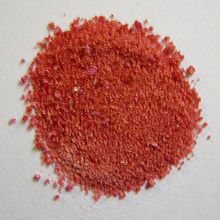
[Edited on 7-1-2021 by sciece nerd]
|
|
|
artemov
Hazard to Others
  
Posts: 181
Registered: 22-8-2018
Member Is Offline
|
|
Quote: Originally posted by sciece nerd  | I took a look of my CoSO4, and I realized it's very red, with a hint of orange, I think it's close enough to bright red for collecting, I think the
photo on Wikipedia displayed it's color quite accurately.
[Edited on 7-1-2021 by sciece nerd] |
Thanks ... I just ordered some malonic acid and barium nitrite to try making some violuric acid and dimethylglyoxime. Hopefully their derivatives will
be red 
|
|
|
Housane
Hazard to Others
  
Posts: 127
Registered: 3-9-2018
Location: Worcester, England
Member Is Offline
Mood: Let’s make
|
|
What procedure are you following for the violuric acid prep?
Green QD's so far
Feel free to correct grammar or incorect knknowledge. We are all learning.
|
|
|
Bedlasky
International Hazard
    
Posts: 1219
Registered: 15-4-2019
Location: Period 5, group 6
Member Is Offline
Mood: Volatile
|
|
Housane: Look at this thread
|
|
|
artemov
Hazard to Others
  
Posts: 181
Registered: 22-8-2018
Member Is Offline
|
|
In my mind:
Malonic acid -> diethyl malonate (Fischer esterification with ethanol) -> barbituric acid (with urea + sodium ethoxide/ethanol) -> violuric
acid (with sodium nitrite)
Yield should be low I supposed.
|
|
|